Day 8 October 17th We Visit Botswana (Page Six)
We are up early and take the bus to Botswana and visit the Chobe National Park where we travel on the Chobe River. Chobe National Park, in northern Botswana, has one of the largest concentrations of game in Africa.
By size, it is the third largest park in the country, after the Central Kalahari Game Reserve and the Gemsbok National Park, and is the most biologically diverse. It is also Botswana's first national park.
In the morning we explore the Chobe River, then have lunch, and then a game drive before returning to Victoria Falls.

We visited the area circled... The parks are huge!
Did You Know? - The Chobe National Park is one of the most visited African Safari Parks. The Chobe Riverfront is famous for its huge concentrations of African Elephant and Cape Buffalo.
During the dry winter months vast herds descend to the River banks to drink. It is one of those unique destinations where the diversity of water and land creates two very different game viewing experiences. The Chobe National Park covers floodplains, swamps and woodland.


The Chobe river has many names... Around #8 it is called Chobe River
and that is where we are going to cruise today

Confluence of Chobe and Zambezi at Kazungula

We made it to the border... Now we find out boat

It was a beautiful day
Did You Know? - Chobe boat cruises are a wonderful way to experience the Chobe National Park. Large herds of Elephants are common in the Chobe National Park. They tend to make their way to the river for a drink and onto the islands in the river to feast off the sweet grass. Puku and lechwe antelopes are common on the Chobe Floodplains. Herds of elephants cross the Chobe River to the islands, a site to behold. Common sites are the hippos and crocodiles basking in the sun.

The animals are indeed wild and on both side of the river

Look carefully under the trees

The hippo's are coming our way

The birds are all over especially in the marshes bordering the river

Water buffalo and antelope live peacefully together
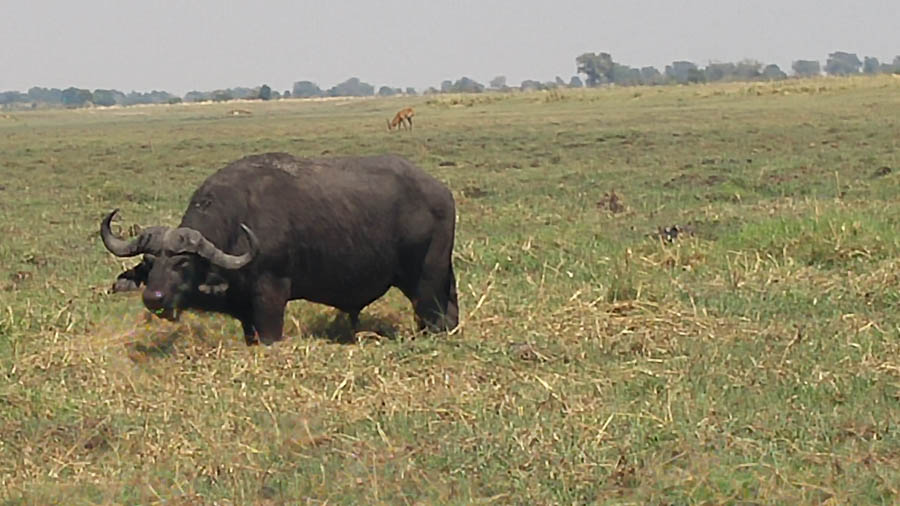
We get pretty close to the wildlife... They seem to take it in stride

Awaiting a meal!
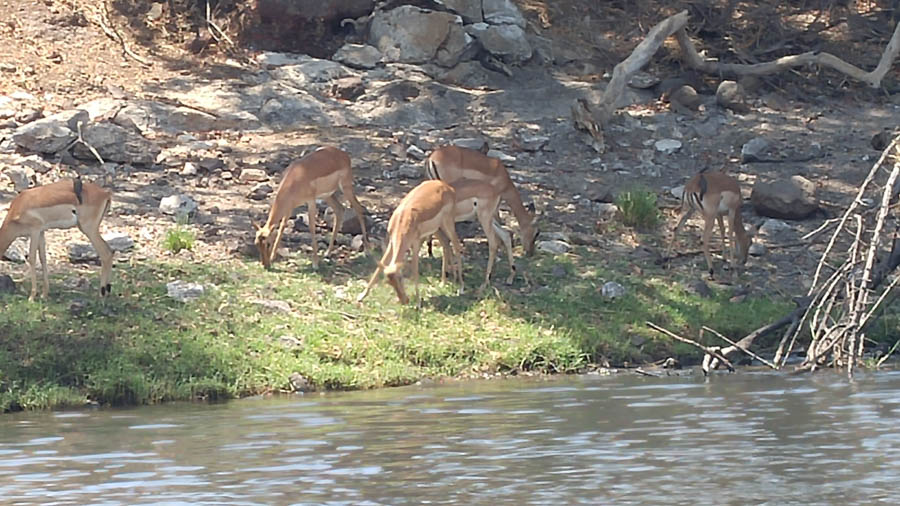
Down by the riverside

Checkout the bird getting a free ride
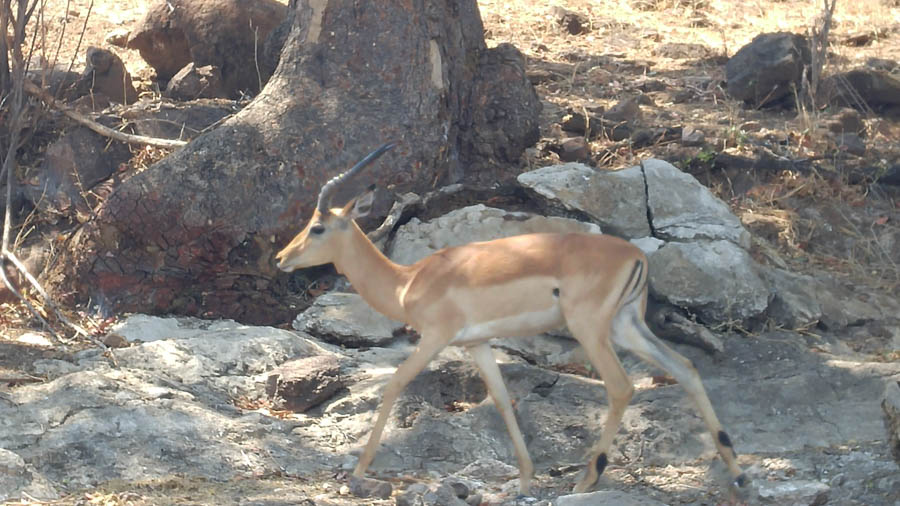
They moved as we got closer to shore
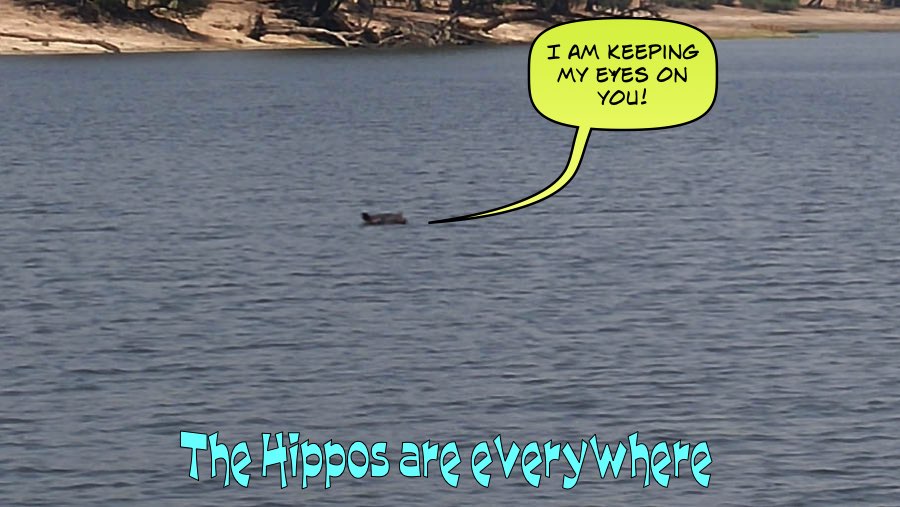
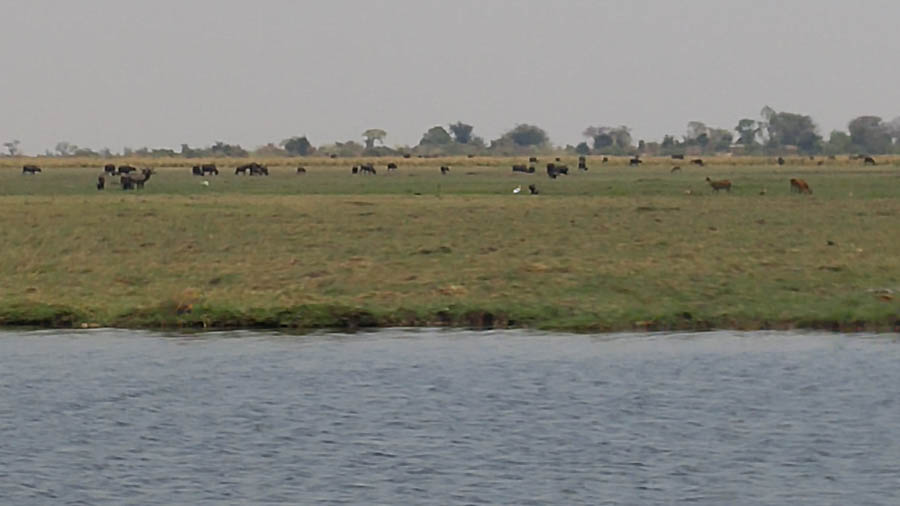
The surroundings are teaming with wildlife
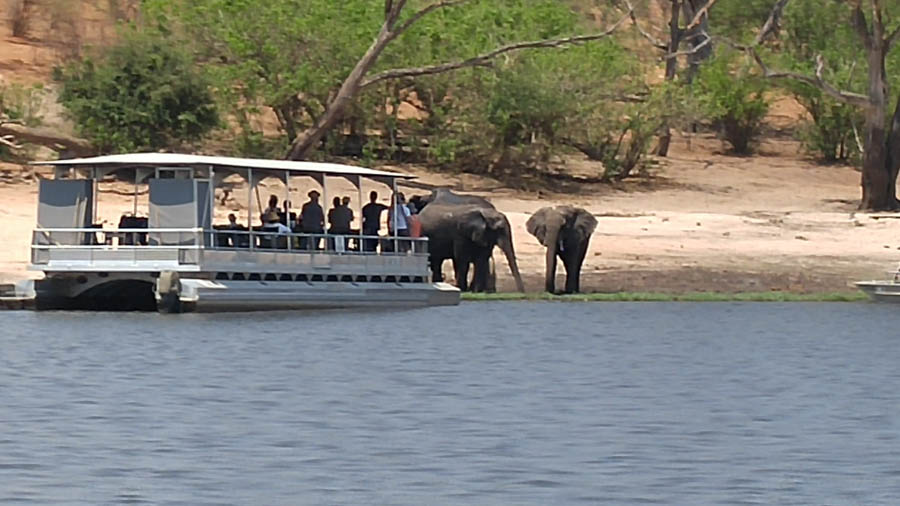
Can't get much closer than this

They must think we are a strange animal

Getting the pictures

Playing in the mud

Just cooling off
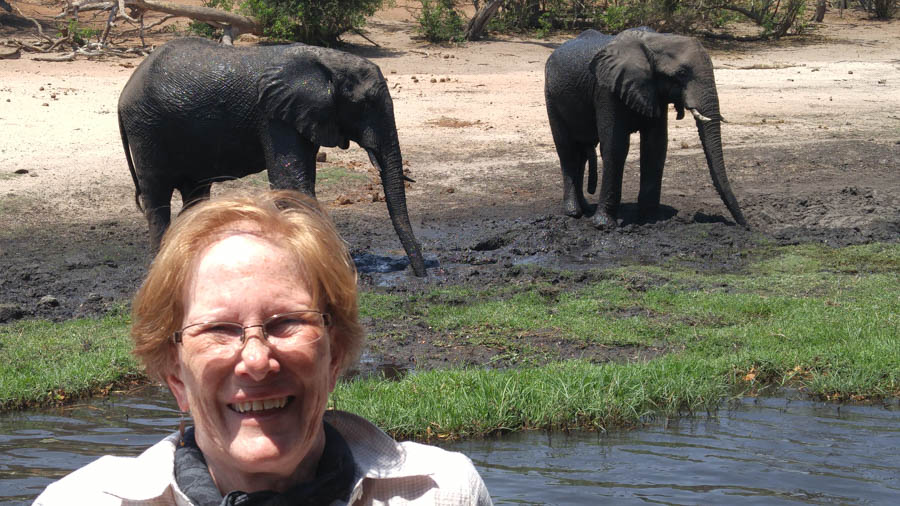
"Hello there"
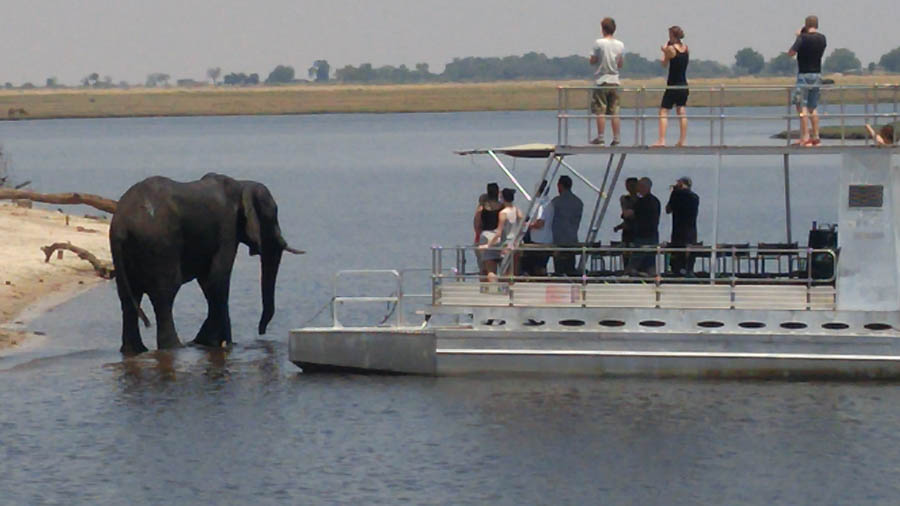
He might want to come aboard and have lunch!
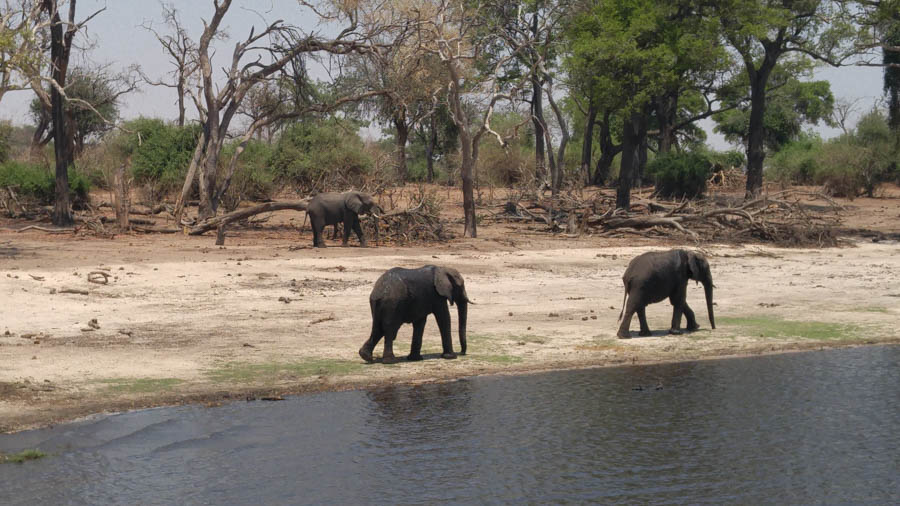 They are off to another location
They are off to another location

or maybe avoiding the hippos

Elephant crossing
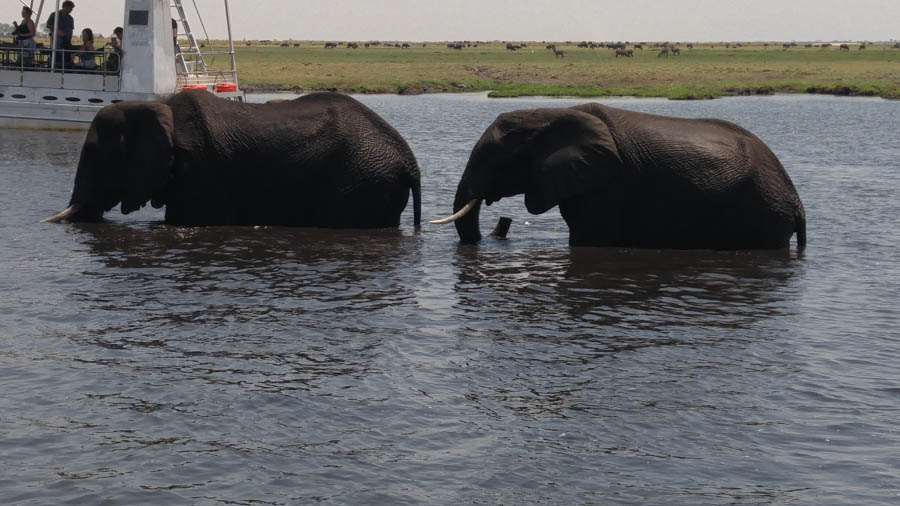
They have no problem with sightseers
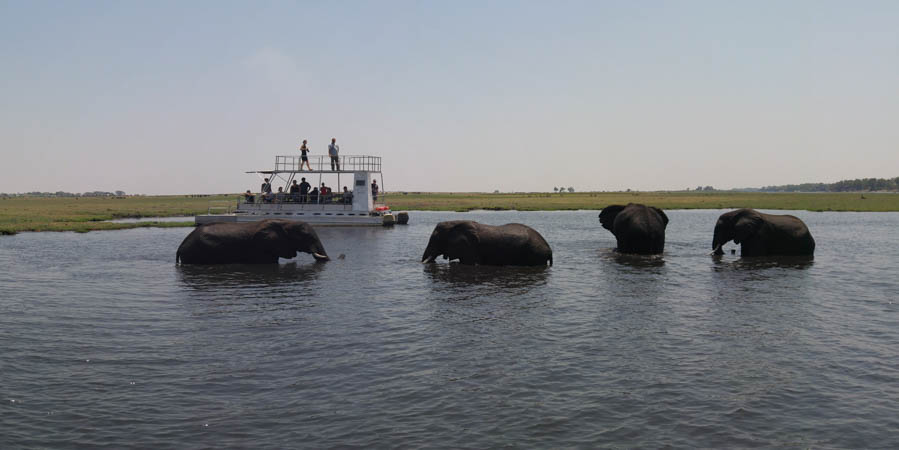
We found out they DO NOT take off their trunks when they swim!

We are outta here!
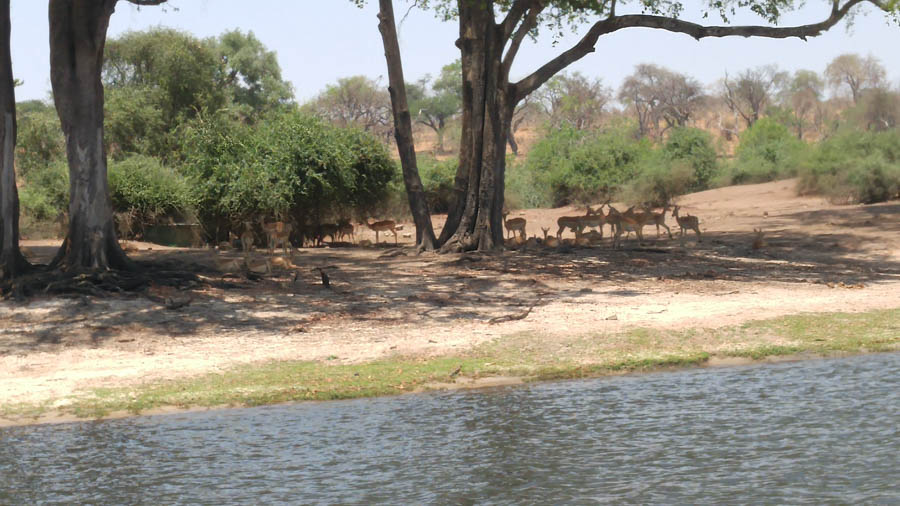
Shade is at a premium
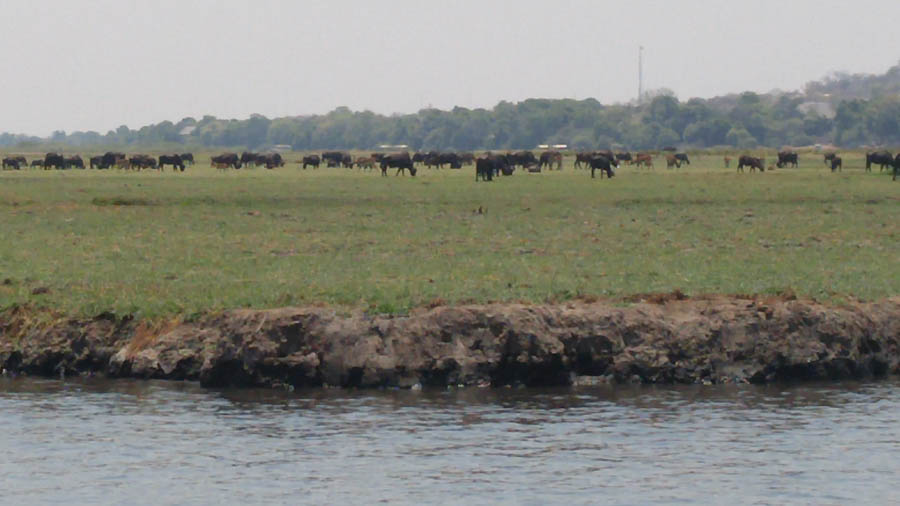
The animals are close to civilization (See the radio tower)

The marsh land is quite popular
Did You Know? - A marsh is a wetland that is dominated by herbaceous rather than woody plant species. Marshes can often be found at the edges of lakes and streams, where they form a transition between the aquatic and terrestrial ecosystems. They are often dominated by grasses, rushes or reeds.
If woody plants are present they tend to be low-growing shrubs. This form of vegetation is what differentiates marshes from other types of wetland such as swamps, which are dominated by trees, and mires, which are wetlands that have accumulated deposits of acidic peat.

Just hanging around

We can get very close... The guide knows how far he can go
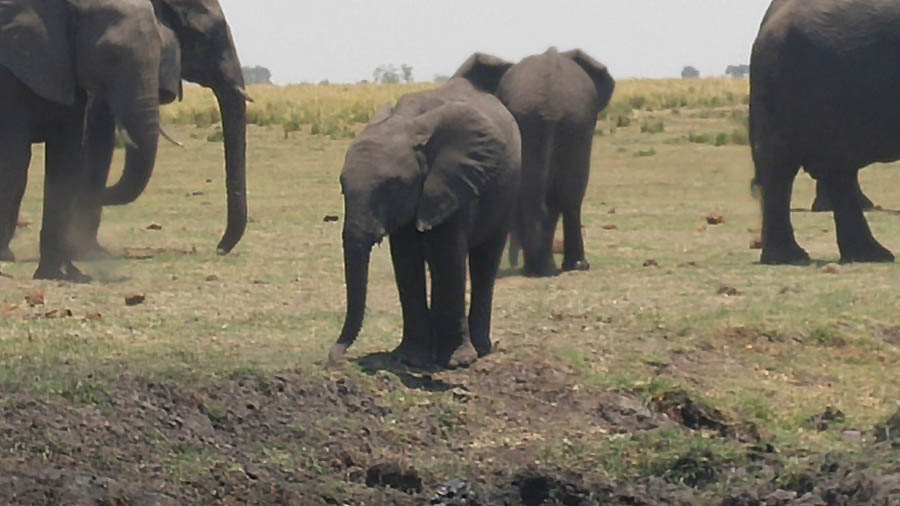
"I am going for a swim"
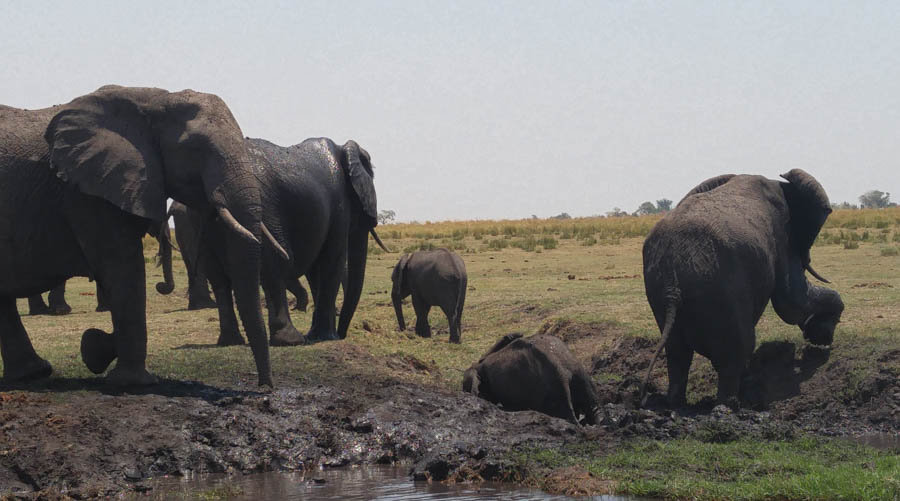
An old stick in the mud?

Looks like the babies are having fun in the mud
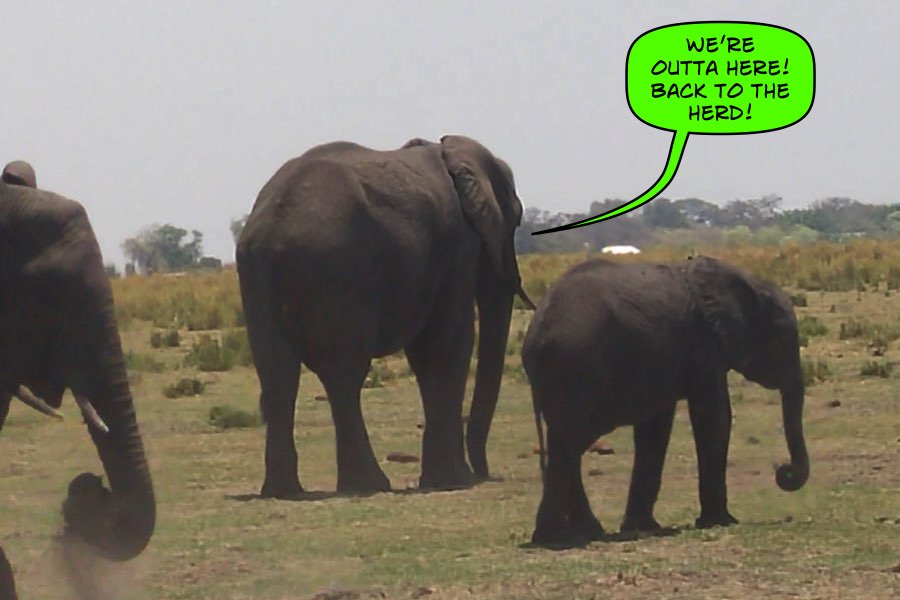
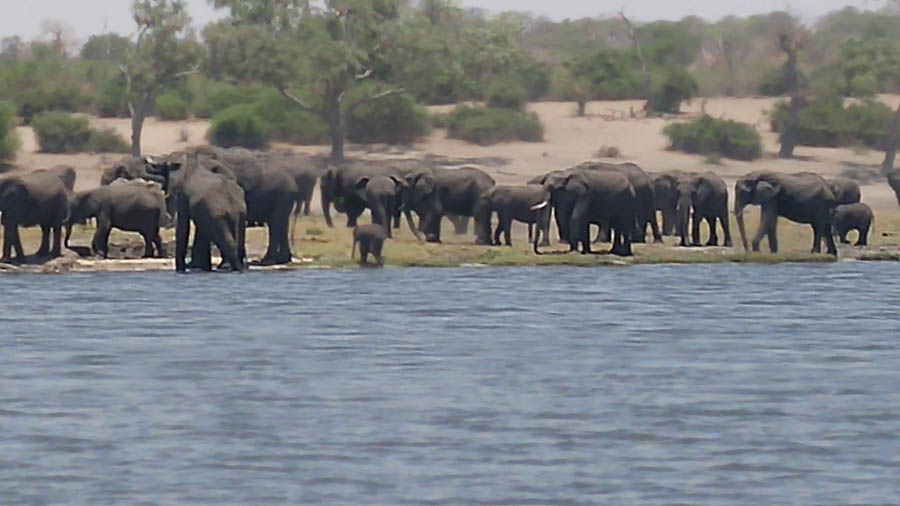
An amazing sight!
Did You Know? - The word 'hippopotamus' means 'river horse', and is often shortened to 'hippo'. Hippos have numerous collective nouns, and a group of hippos is often referred to as a crash, bloat, herd, pod or dale.
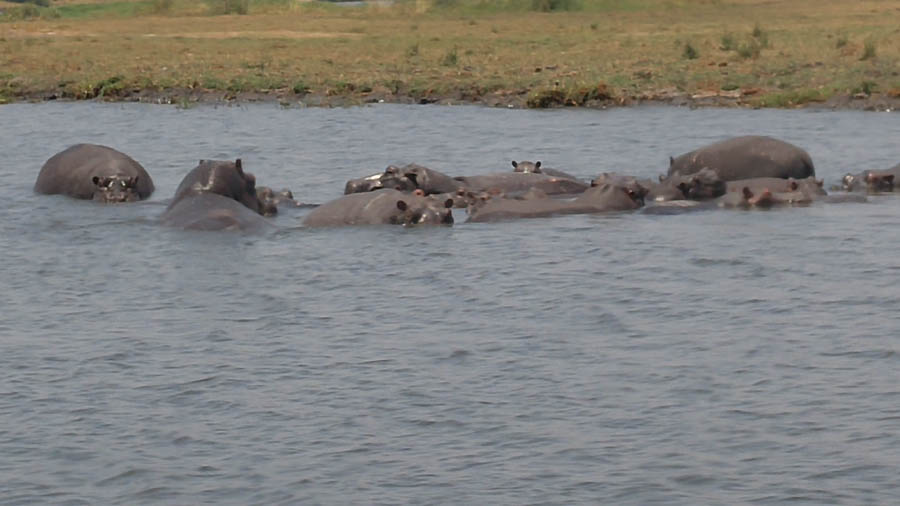
The horses stay in the water almost all day

Where is the Disneyland Jungle Boat captain when you need him?


Set along the scenic Chobe River and a 5-minute walk from
the entrance of the picturesque Chobe National Park

Super setting right out in the middle of nowhere!

...and you can watch the river flow by!
